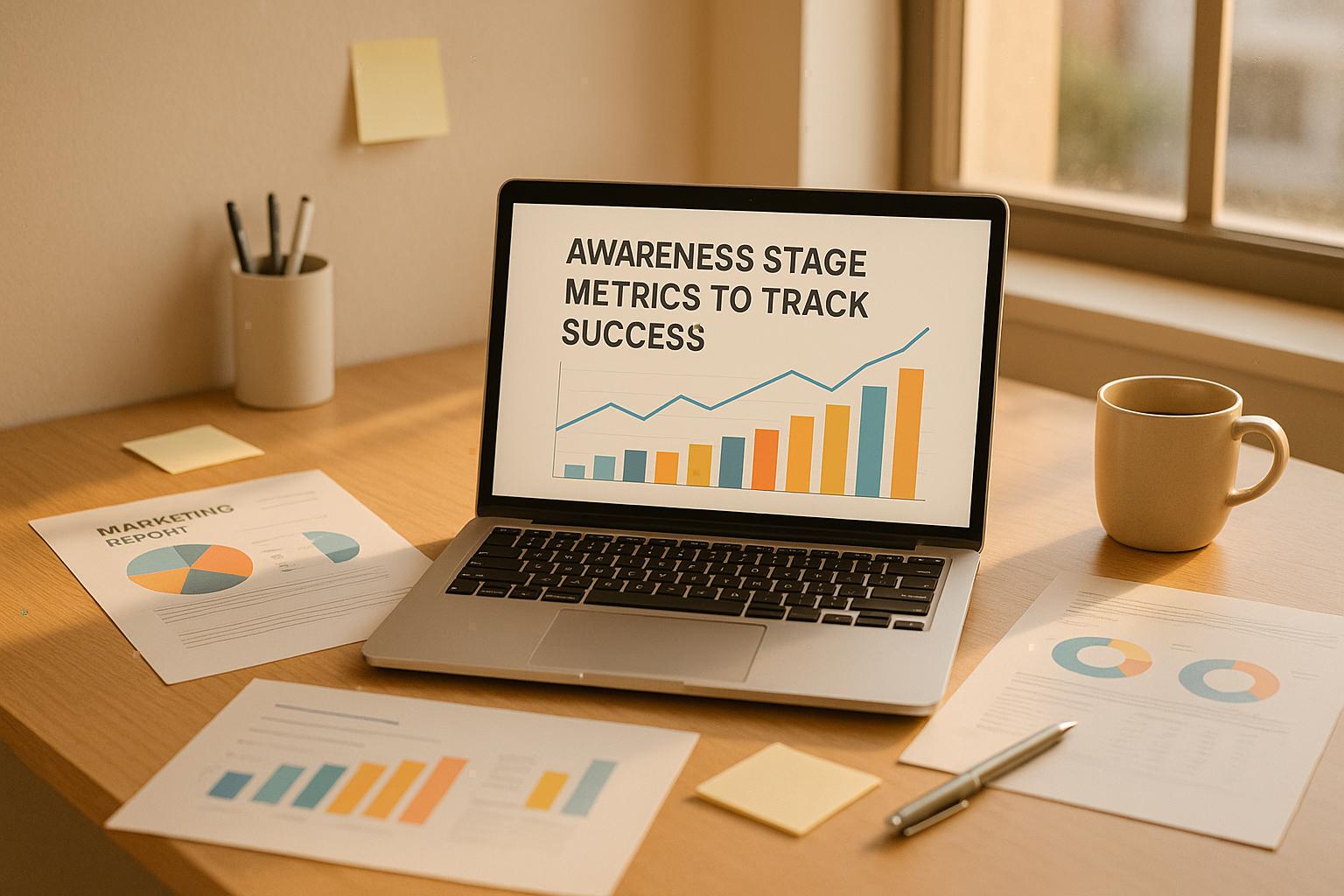Retention metrics show how well your business keeps customers. Tools like Mixpanel, Gainsight, and Zendesk help track key metrics such as customer retention rate, churn rate, and lifetime value. Retention is cheaper than acquiring new customers, and improving it by just 5% can increase profits by 25%-95%. Here's what to look for in retention tools and the best options available:
-
Key Features to Look For:
- Cohort Analysis: Groups users by behavior to identify trends.
- Churn Prediction: AI tools flag at-risk customers.
- Customer Segmentation: Analyzes based on demographics or behavior.
- Integration: Connects with CRMs, marketing tools, and analytics.
- Real-Time Data: Enables quick responses to customer behavior.
- Automation: Triggers campaigns or alerts based on metrics.
-
Top Tools:
- Mixpanel: Best for SaaS and mobile app analytics; free for 1M events/month.
- Gainsight: Ideal for enterprises; starts at $1,200/month.
- Hotjar: UX-focused; starts at $39/month.
- Kissmetrics: Tracks user journeys; custom pricing.
- Zendesk: Retention through customer support; starts at $19/agent/month.
Improving retention isn't just about tracking data - it's about turning insights into action. Choose the tool that fits your business size, industry, and goals.
5 Best Product Analytics Tools For Customer Retention (With Less Effort)
How to Choose Retention Metrics Tools
Turning raw data into meaningful actions can make all the difference when it comes to building stronger customer relationships. Picking the right retention metrics tool is a game-changer for your strategy. The wrong tool? It can lead to messy data and missed opportunities. But the right one? It transforms numbers into strategies that keep your customers coming back.
Must-Have Features
When evaluating retention tools, there are several features that stand out as essential:
- Cohort Analysis: This is a cornerstone for tracking retention effectively. It groups users by shared behaviors or characteristics and monitors their activity over time. This helps uncover patterns and informs targeted strategies. Tools like Mixpanel, Gainsight, and Kissmetrics include built-in cohort analysis to track user activation, adoption, and drop-offs.
- Churn Prediction: Advanced tools use AI to predict which customers are likely to leave, giving you a chance to act before it's too late. Gainsight and Salesforce Einstein, for instance, use AI to identify risky behaviors and automate follow-ups - key for reducing churn and boosting lifetime value.
- Customer Segmentation: Tailoring your strategies to specific groups is crucial. Segmentation allows you to analyze customers based on demographics, behavior, purchase history, and more. Without it, you risk overlooking important opportunities.
- Integration Capabilities: A retention tool should seamlessly connect with your existing systems, like CRMs (e.g., Salesforce, HubSpot), marketing platforms, and analytics tools. This ensures retention insights are tied directly to sales and marketing efforts for a smoother customer journey.
- Detailed Reporting and Analytics: Data is only useful if you can act on it. Look for tools with customizable, interactive dashboards that let you dive into the metrics that matter most for your goals.
- Real-Time Data Processing: In today’s fast-paced world, immediate responses to shifts in customer behavior are essential. Tools offering real-time updates allow you to act quickly when metrics indicate a problem.
- Automation: Streamlining workflows is a major plus. The best tools can automatically trigger campaigns, alerts, or follow-ups based on specific customer behaviors or retention thresholds.
These features ensure that your tool doesn’t just collect data - it helps you act on it to improve retention.
How We Chose the Best Tools
With these features in mind, the selection process focused on tools that deliver measurable results. Our top picks were chosen based on strict criteria emphasizing effectiveness and user satisfaction. Reviews and ratings from platforms like G2 were key, with tools like Mixpanel (4.6), Gainsight (4.5), and Zendesk (4.3) standing out for their consistently high user feedback.
Feature depth was another critical factor. Each tool needed to offer robust analytics, an easy-to-use interface, and a proven ability to improve retention metrics. For example, Mixpanel excels in detailed analytics for SaaS companies, while Gainsight’s customer health scoring is a favorite among enterprises.
Industry fit also played a role. Mixpanel is a go-to for SaaS and product-led companies, Gainsight is widely used by large enterprises, and Zendesk is a favorite in customer service-driven industries. Tools with scalable, AI-powered features made the cut to ensure they could meet the needs of businesses of all sizes.
Integration strength was a major consideration as well. For 2025, businesses need tools that work seamlessly with their existing tech stacks. Tools offering extensive integration options and API capabilities earned higher marks.
Finally, we considered emerging trends in retention analytics. Features like AI-driven insights, predictive modeling, and automated workflows are becoming standard. Tools that leverage machine learning for churn prediction and offer automation for retention strategies align with expert recommendations for staying competitive in 2025.
For businesses aiming to improve their retention while refining their marketing funnels, resources like the Marketing Funnels Directory can help you find tools tailored to different stages of the customer journey. This ensures your retention efforts align with broader business goals.
Best Tools for Tracking Retention Metrics
When it comes to tracking retention metrics, having the right tools can make all the difference. Below are some standout options, each offering unique features tailored to different business needs and sizes.
Mixpanel
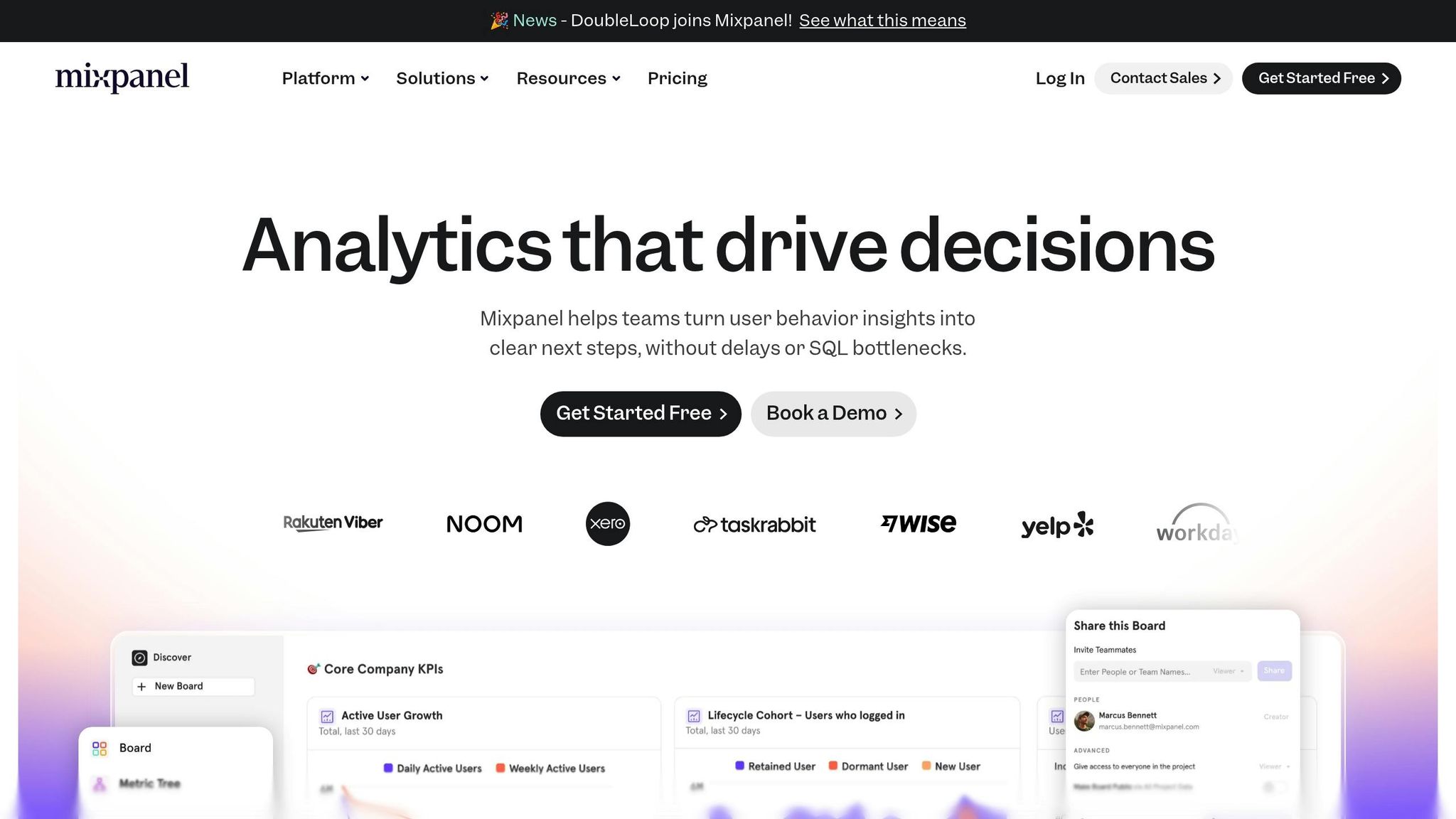
Mixpanel is a go-to choice for SaaS and mobile app analytics. It excels in retention analysis, cohort tracking, and predictive analytics, giving you a clear picture of user behavior across multiple touchpoints. The tool also benchmarks regional retention and highlights features that drive engagement, with support for over 100 integrations. Mixpanel’s pricing is straightforward: it offers 1 million events per month for free, with additional events costing $0.28 per 1,000 events. Enterprise plans are available for larger-scale needs. On G2, Mixpanel boasts an impressive 4.6 out of 5 rating.
Next up, Gainsight brings enterprise-level customer success into focus.
Gainsight
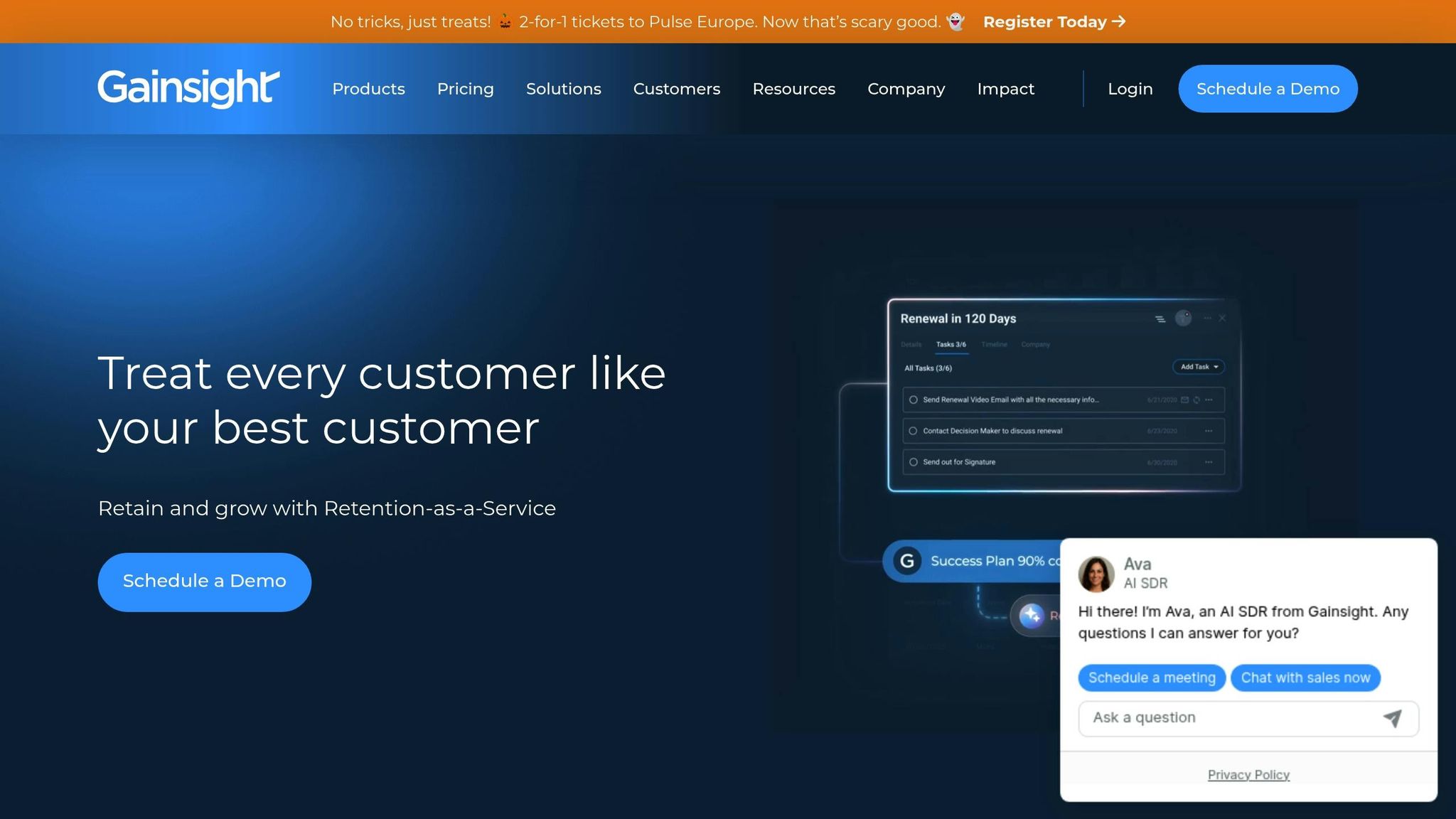
Designed with enterprise customer success teams in mind, Gainsight provides a comprehensive view of your customer base. Its customer 360 view consolidates data from various sources, while AI-driven risk scoring and automation tools help you proactively tackle churn. Gainsight’s features have been shown to significantly improve customer health scores. Pricing for custom plans starts at approximately $1,200 per month, reflecting its robust capabilities. Gainsight holds a solid 4.5 out of 5 rating on G2.
For immediate UX insights, Hotjar is a standout option.
Hotjar
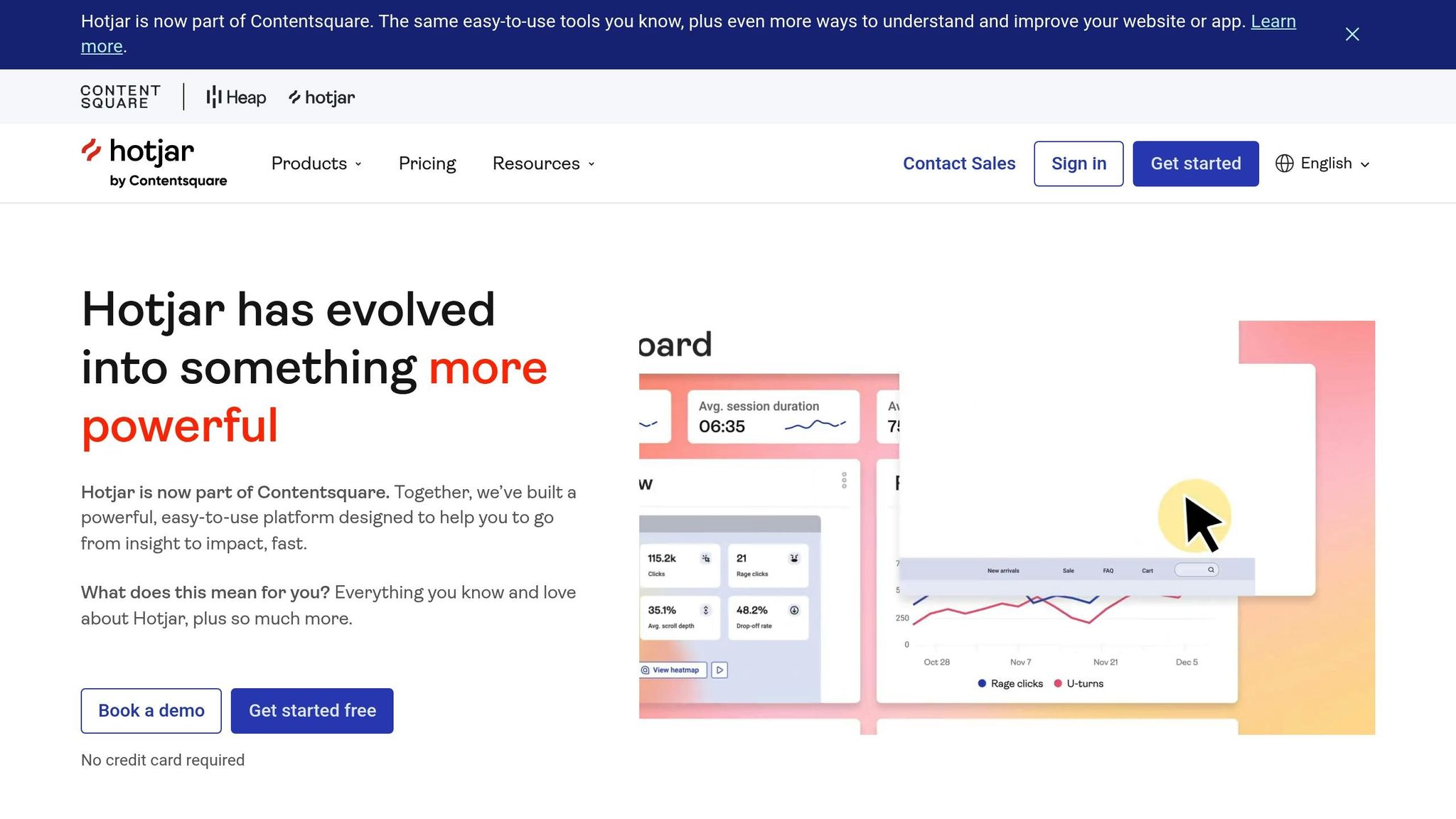
Hotjar is all about improving user experience and website performance. It offers tools like session recordings, heatmaps, and feedback widgets to visually map user interactions. These insights help pinpoint friction points on your site, enabling you to make changes that can lead to higher conversion rates. With pricing starting at just $39 per month, Hotjar is an affordable solution for small to mid-sized businesses aiming to enhance retention through better UX.
Kissmetrics is another strong contender, especially for tracking user journeys.
Kissmetrics
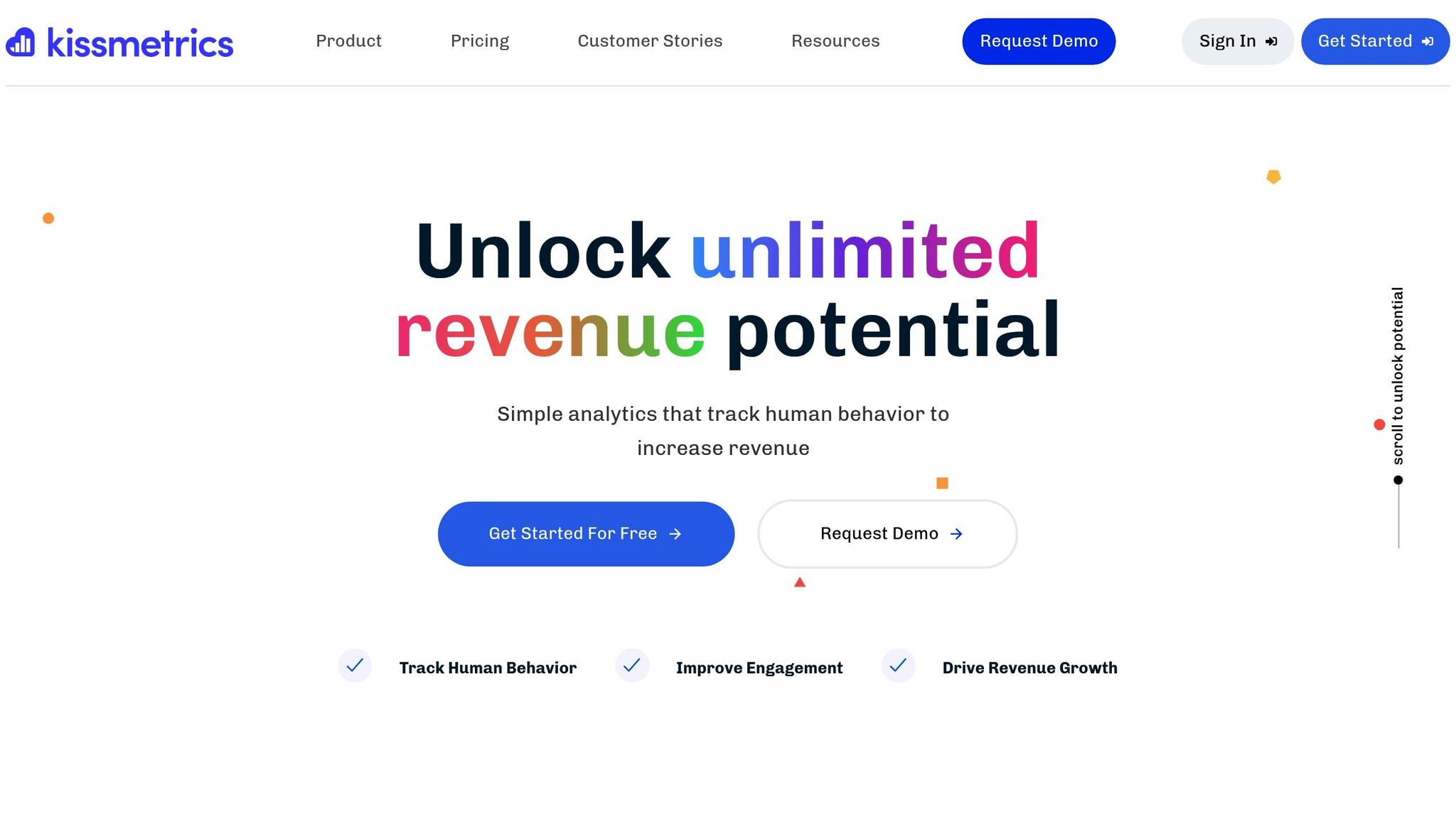
Kissmetrics specializes in tracking individual user journeys across devices, delivering detailed insights into customer behavior and revenue impact. Features like customer lifecycle tracking, cohort reports, and revenue segmentation make it a valuable tool for SaaS and e-commerce businesses. Customizable reports and goal tracking help identify where customers drop off and what keeps them engaged for the long haul. Pricing starts at $299 per month, and it holds a 4.1 out of 5 rating on G2.
For businesses prioritizing customer support, Zendesk is a powerful option.
Zendesk
Zendesk focuses on retention through excellent customer support. Its ticketing, analytics, and automation tools streamline customer service, while its omnichannel capabilities let you manage interactions across email, chat, phone, and social media. Proactive features even allow you to address issues before customers reach out, making it ideal for businesses where support is key to retention. Zendesk’s pricing starts at $19 per month per agent, and it has a 4.3 out of 5 rating on G2.
Use these tools to strengthen your retention strategy and keep your customers coming back. Each option offers distinct advantages, ensuring there’s something for every business need and budget.
sbb-itb-a84ebc4
Tool Comparison Table
Here's a side-by-side breakdown of retention tracking tools to help you weigh their features, costs, and suitability for your needs. The table below highlights what each platform brings to the table and how they compare.
| Tool Name | Key Features | Pricing (USD) | Free Trial Availability | Best For | User Ratings |
|---|---|---|---|---|---|
| Mixpanel | Retention analysis, cohort tracking, funnel analysis, predictive analytics, 100+ integrations | Free (1M events/month), $0.28 per 1,000 events after | Free plan available | SaaS companies, product teams, digital businesses | 4.6/5 (G2) |
| Gainsight | Customer 360 view, AI-powered health scoring, advanced analytics, automated workflows | Custom pricing, starts around $1,200/month | Yes | B2B enterprises, customer success teams | 4.5/5 (G2) |
| Hotjar | Heatmaps, session recordings, user feedback widgets, surveys | Free basic plan, paid plans from $39/month | Yes | UX/UI teams, e-commerce, website optimization | 4.3/5 (G2) |
| Kissmetrics | Individual user journey tracking, revenue segmentation, cohort reports, goal tracking | Custom pricing | Yes | E-commerce, SaaS, marketing teams | 4.1/5 (G2) |
| Zendesk | Omnichannel support, ticketing system, live chat, knowledge base, analytics | $19/month per agent | Yes | Customer support teams, all industries | 4.3/5 (G2) |
User ratings, ranging from 4.1 to 4.6 out of 5, reflect the strengths of each tool. Whether you're a SaaS company, a customer success team, or focused on website optimization, there's a tool tailored to your needs. To dive deeper into retention strategies or discover complementary tools, check out the Marketing Funnels Directory (https://topmarketingfunnels.com). With this comparison, you're better equipped to find the perfect match for your team.
Conclusion
Picking the right retention metrics tools can be a game-changer for your business. A small improvement in retention - just 5% - can lead to a profit increase ranging from 25% to 95%. Plus, keeping your current customers is far more cost-effective, often being up to five times cheaper than acquiring new ones.
The tools we've discussed address different aspects of retention, whether it's product analytics, customer success, or understanding user experience. Many of the more advanced options even leverage AI to predict churn and automate personalized engagement. Integrating these tools with your existing systems can help you build a cohesive and actionable customer retention strategy.
When choosing a tool, focus on how well it fits with your marketing stack and whether it provides insights you can act on. For a broader look at tools that can optimize your entire marketing funnel, check out the Marketing Funnels Directory (https://topmarketingfunnels.com).
FAQs
What sets Mixpanel, Gainsight, and Zendesk apart when it comes to tracking retention metrics?
Mixpanel, Gainsight, and Zendesk each bring distinct strengths to the table when it comes to tracking retention metrics, designed to address various business priorities. Mixpanel shines in product analytics, offering detailed insights into how users interact with your product and identifying retention trends. Gainsight zeroes in on customer success management, helping businesses monitor customer health and tackle churn. Meanwhile, Zendesk stands out for its customer support analytics, providing tools to evaluate how service quality influences retention.
The right choice depends on your specific objectives. If you’re looking for deep insights into user behavior, Mixpanel could be the way to go. For companies focused on nurturing customer relationships, Gainsight offers tools tailored to that need. And if improving retention through exceptional customer support is your priority, Zendesk’s analytics can help you measure and enhance service performance effectively.
What are the best ways to integrate retention tracking tools with your existing systems to improve customer retention?
To seamlessly incorporate retention tracking tools into your current systems, start by confirming that the tool works with your existing software, like CRM platforms or analytics tools. Many of these tools come with APIs or built-in integrations that make data sharing and reporting easier.
Make sure to sync essential metrics, such as customer behavior, purchase history, and engagement data, across all platforms. This helps you build a complete picture of your customers and spot patterns that influence retention. It's also important to train your team on how to use these tools effectively and automate repetitive tasks, like sending follow-up emails or monitoring churn rates. When the tool is aligned with your business objectives, it can have a stronger impact on keeping your customers engaged.
How does AI help predict customer churn, and how can businesses use it to boost retention?
AI has become a game-changer in spotting potential customer churn. By examining patterns in behavior, purchase habits, and engagement levels, it can pinpoint early warning signs - like a drop in activity or a noticeable dip in spending - that suggest a customer might be on the verge of leaving.
With these insights, businesses can step in and make a difference. Whether it’s offering tailored incentives, upgrading customer support, or resolving specific concerns, acting on these predictions can boost customer satisfaction and help keep retention rates strong.
